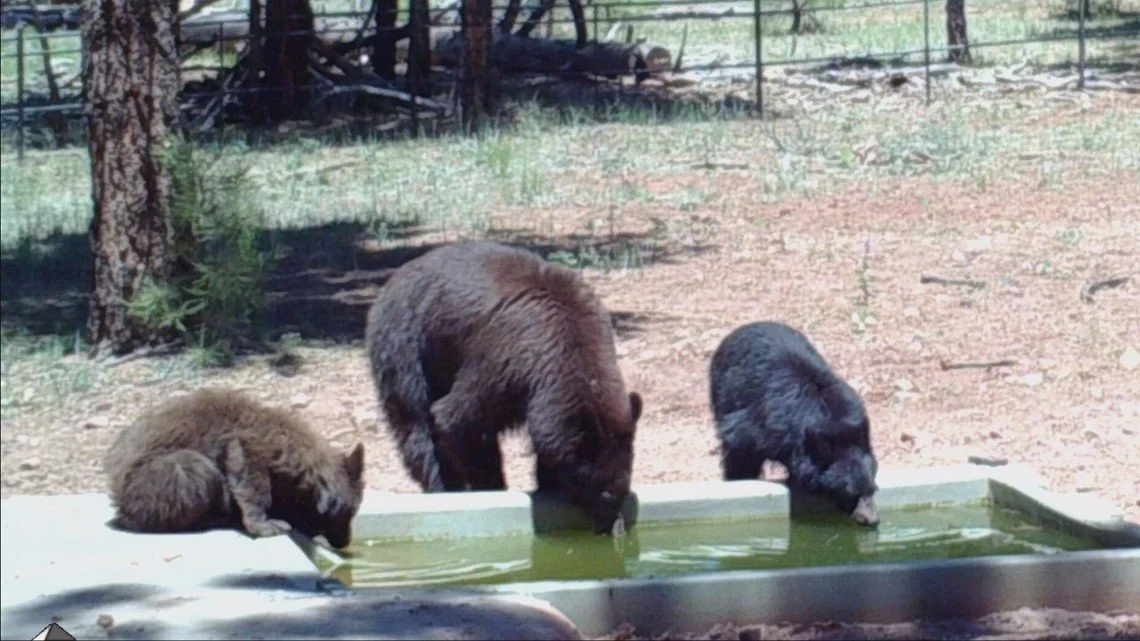Arizona's Fish Hatcheries
AZGFD oversees six hatcheries that raise a range of native and sport fish, including Apache and Gila trout, as well as rainbow, brown, brook, tiger trout, and Arctic grayling. These hatcheries play a crucial role in creating and enhancing sport fishing opportunities in Arizona's streams, ponds, lakes, and reservoirs. One facility also focuses on raising native fish species to support conservation efforts.
Most AZGFD hatcheries are aging and in need of significant renovations, with some facilities last updated over 25 years ago. Modernizing these hatcheries is essential for improving fish production and incorporating biosecurity measures to prevent the spread of aquatic invasive species. Funding is needed to support these crucial updates and expand fish stocking and native fish propagation programs.
Key Projects Include:
General Modernization: Upgrading water collection, filtration, and treatment systems at Page Springs, Canyon Creek, and Tonto Creek Hatcheries to ensure optimal water quality.
Infrastructure Improvements: Rehabilitating tanks and raceways to enhance fish habitats and increase production capacity, including automated feeding systems for consistent nutrition.
Energy Efficiency: Implementing LED lighting and solar power to reduce operational costs and environmental impact.
Biosecurity Enhancements: Strengthening protocols to prevent disease outbreaks and protect fish populations.
Public Education: Upgrading facilities for outreach programs to promote conservation and sustainable fishing practices.
At the Bubbling Ponds Hatchery, AZGFD raises trout and various native species, including roundtail chub, razorback sucker, Sonora sucker, Gila topminnow, loach minnow, and spikedace, as well as a broodstock population of largemouth bass. Funding is needed to develop an enclosed building dedicated to the propagation of these native fish and bass.
Additionally, Cold Springs Ranch was acquired to conserve native species and develop a hatchery for Gila trout. Funding is needed for ongoing development of this hatchery and to expand Gila trout propagation, enhancing angling opportunities for the public. This support is vital for the future of Arizona's fishery conservation and recreation efforts.
Conserving Wildlife
Wildlife Habitat Maintenance and Restoration
AZGFD is dedicated to maintaining and restoring habitats to promote thriving wildlife populations. Each year, AZGFD makes enhancements to over 800,000 acres of habitat across the state, improving environmental resilience and bolstering wildlife populations, while mitigating the impacts of drought and wildfire. These essential projects are costly but critical for supporting wildlife and the recreational opportunities they provide.
Habitat improvement efforts focus on two primary methods:
Mechanical Removal of Invasive Trees: This process restores grasslands and woodlands, benefiting species such as pronghorn, mule deer, and other grassland-dependent animals. Long-term focal areas have been identified in northern, central, and southern Arizona for phased work, which is only limited by available funding.
Enhancement of Water Sources for Livestock and Wildlife: Year-round water access improvement projects such as spring boxes, wells, pipelines, earth tanks, and rain-harvesting systems. Given the ongoing drought conditions, these enhancements are crucial and vary in scale, requiring financial support of all sizes.




